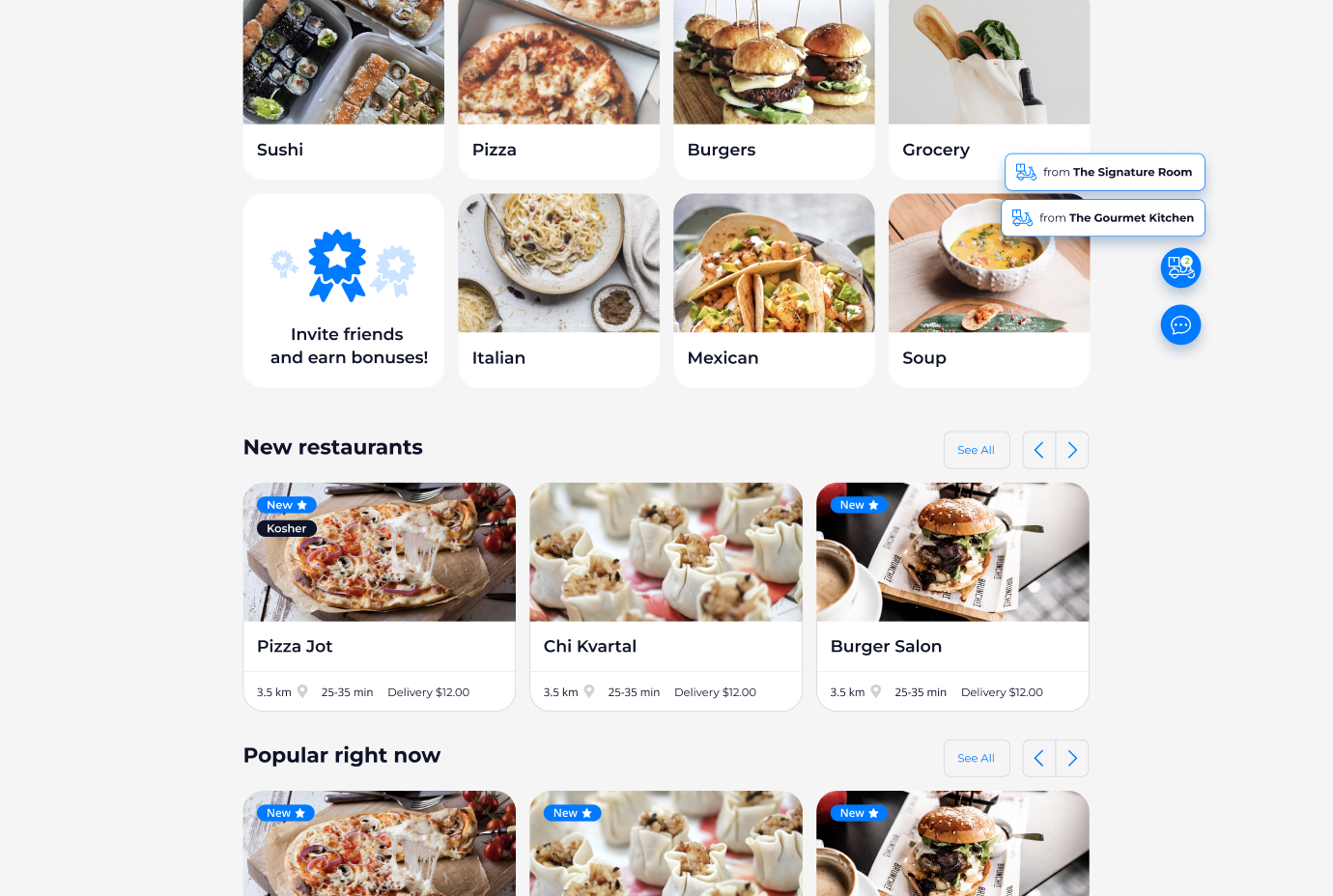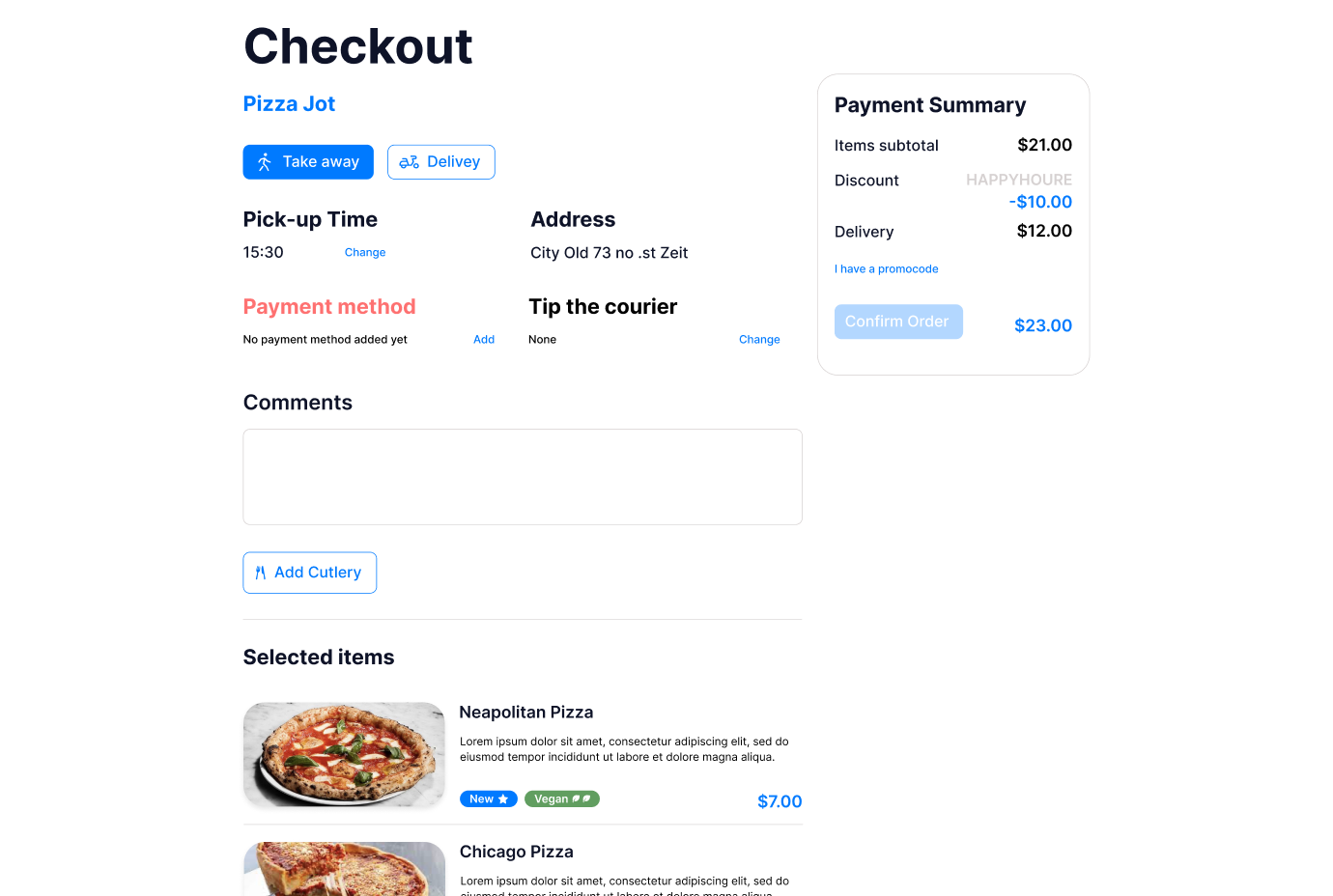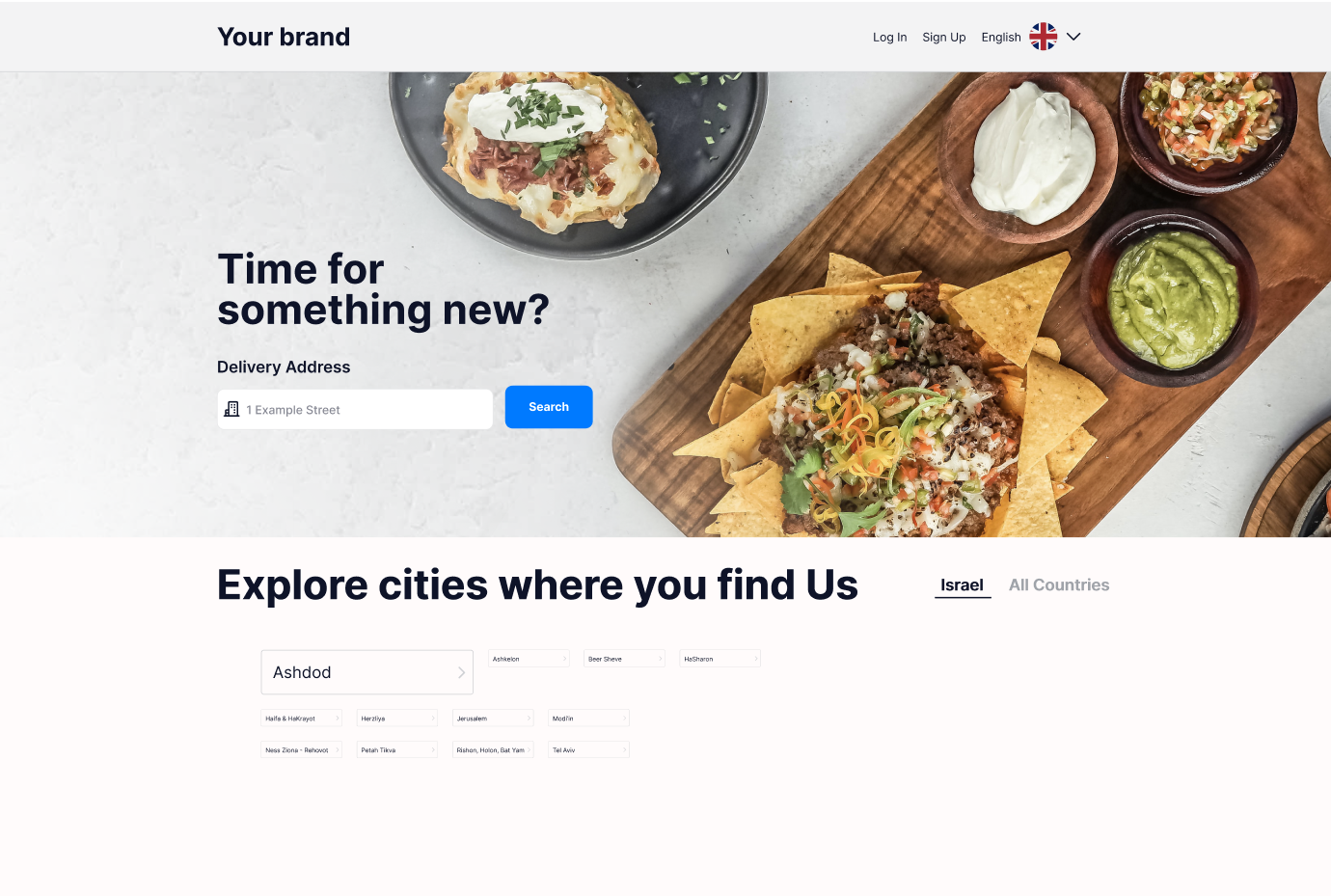A white-label goods delivery system
White-label goods delivery mobile technology with multipurpose applications

Business needs
The client’s core requirement was to develop an application that could support a number of different business requirements, all related to the physical order to delivery processes of goods and services. These requirements were as diverse as restaurants, markets, flowers and grocery store deliveries and so the core architecture and UX of the application had to be generic enough to accommodate the processes common to all. The whole delivery journey had to be supported by the application, from order to order tracking by location.
Technology stack
Analysis and suggestion
All elements of the project were delivered by our teams. The Customer provided the idea and the functional requirements, and we turned these into technical reality. Through a series of workshops, we identified the core principals of the application that would help the business scale the solution to fit any or all of the core markets it was to be applied to. The end result was a complete service that could function both in an identified market specific variant, or be used on a white-basis moving forwards.
Functionality & design
Our initial brief was to deliver 3 applications covering the main functional requirements of the order to delivery process. The first was to manage inventory and accept orders. The second was to process these orders and take payment. The third was to manage the delivery of these orders to customers.

The application was to be developed as a white-label solution, one that can be used by any number of businesses and personalised accordingly from a brand and content perspective. Obviously and for efficiency purposes, the white-label application utilises the various elements of the core architecture and processes only where and when necessary, so if a Customer only needs order processing, for example, they do not need to implement or leverage the delivery functionality.

Further customisation was added to the white-label solution through the ability of the Customer to add inventory in the form of product cards containing: images, labels & taxonomy, price, delivery estimates and a rating service.

Additionally, we implemented delivery status functionality to update on orders and using map technology to show the physical location of goods in transit. Generic order processing was delivered with a Stripe integration to take payments and we leveraged this technology to allow Users to generate gift-cards and discounts for use within the service.

Auxiliary technical features were also implemented to make the application more refined such as infinite scrolling through product catalogues, the usage of a deep link to assist navigation, the adding of coordinates to the images API to assist on-screen image optimisation and asset caching to increase performance and load time.

There is also an optional chat SDK that the Customer can add to the service to make the application cover full interactivity between vendor and customer.

Internationalisation was also a requirement for the project and so a multitude of considerations were planned into the technical planning. The initial application was released in Hebrew and so, along with the incorporation of the necessary character sets, we also had to allow for LTR (Left-to-Right) functionality and factor this into the UI design phase.

From an administrative perspective, Customers access the management system via a custom web application via desktop/laptop/tablet. This allows for configuration, content management, business performance analytics and communication with either customers or shipping/delivery colleagues.

Finally, we created a plug-in for Wordpress so that the entire order/delivery ecosystem can quickly be deployed on a typical marketing property.
In summary
As a result, we delivered 3 united applications for the project. The first to accept orders, the second to process incoming orders and the third to manage the delivery of orders to customers. The flexible technical principals applied to the project, relating to configuration, inventory management and style & branding, have led to strong international adoption. Quick to implement, personalised to brand and hassle-free management – supported by the latest technology – has made the product a highly desirable choice to those in the market.



